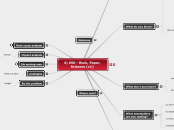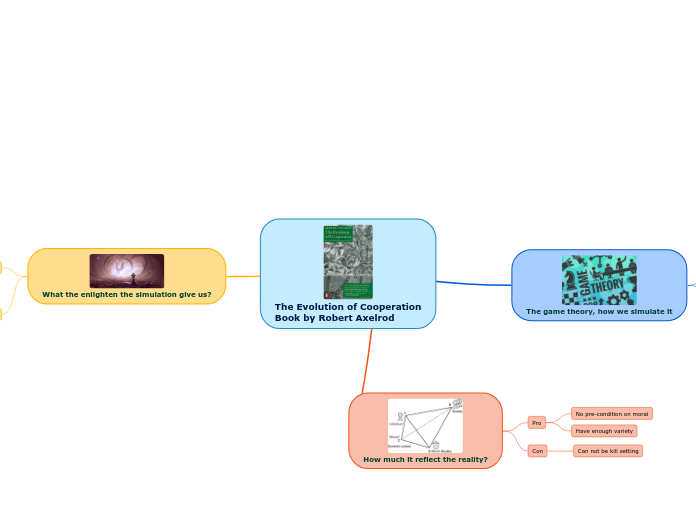Where next?
You can continue to develop this map without the Smart Map wizard by saving it as a normal Mindomo map.
When have a comprehensive description of the problem, you can move towards finding solutions. Consider a brainstorm as a next step, using the Brainstorming Toolbox Smart Map.
You can delete this topic from the saved map.
Welcome
Researching and describing a problem clearly is the foundation for solving it. Solutions based on incomplete research or poor descriptions can often fail to reach the root causes.
This Smart Map helps you to research and describe a problem from a number of different angles. It contains a mix of factual information-gathering tools and lateral thinking techniques, to develop perspectives that can point towards solutions.
You can use this map individually and in collaboration with others. It is vital to get consensus on the actual problem you are facing, otherwise there may be no consensus on the solution. Putting the descriptions together in one place helps you to explain and agree upon the basis for finding and evaluating solutions.
You can delete this topic from the saved map.
4) 650 - Rock, Paper, Scissors (v1)
GIST(General Idea of Some Thing): Write a console-based program that will allow a user to play Rock-Paper-Scissors against the computer.
Abstract: The console-based program will (describe what happens, paint a word-picture)
Be the problem
Be the problem is a popular technique for understanding problems. It means developing a character for the problem and describing its nature as if it were a person.
Insight
Analogies
Can you find analogies for this problem?
The underlying characteristics of a problem can sometimes be clearer when it is taken out of context.
What is it like?
Six serving men
"Six Serving Men" is based on Rudyard Kipling's poem, which begins:
''I keep six honest serving men
(They taught me all I knew);
Their names are What and Why and When
And How and Where and Who.''
We can profile a problem and perhaps discover more about it by asking structured questions.
Who?
Who not?
Where?
Where not?
How?
How not?
When?
When not?
Why?
Why not?
What?
What not?
Impact analysis
Impact analysis looks at who is affected by the problem - what the consequences are, rather than the causes.
Person
Impact
Root cause analysis
For analytical problems, root cause analysis can help to unravel indirect causes of problems, leading to more effective solutions. One way to do this is to keep asking "Why?" down to five levels, to understand the reasons behind the reasons.
Cause
Solution criteria
How will you know when you have solved the problem?
* What will a successful solution look like?
* How will you filter and assess potential solutions?
* How will you verify that the issue has been solved?
You might want to return to the solution criteria several times as you develop the definition of the problem.
!
no user-defined functions
conditional logic is limited
to if/else if/else
Console-based
program
What assumptions
are you making?
In identifying the problem and the probability of a solution, what assumptions are you making?
Assumptions can sometimes be hard to see or accept. For example, if the "problem" is that sales of a certain product are too low, you may naturally aim to increase sales. You are ''assuming'' that the market demand for this product will continue. But if the demand disappeared overnight in a storm of negative publicity, then the original problem and solution also change. So the problem and logical solution are partly based on an assumption.
d) player/user enters a valid choice
c) using a traditional die
1 or 2 => Rock
3 or 4 => Paper
5 or 6 => Scissors
b) single play-no loop
game can end in a draw
a) user knows how to play RPS
What don't you know?
What other information might help, but is not available today?
* How would it help?
* How could you obtain it?
* Can you work without it?
* What are the risks or consequences of not knowing?
* Who else might have further information and insight?
enumerating the available:
How do enumerations support the concept of expressive coding?
results
choices
randomize computer choice
random number generator
What do you know?
Factual data about the problem
Use case(s)
Revised
You can even put the "ideal" script here in the notes.
5) END PROGRAM
a) display a "pause"
message before exiting
4) Output
b) display results
indicate exactly what you want to say....
You picked: (Rock, Paper or Scissors) (1, 2 or 3)
Computer picked: (Rock, Paper or Scissors) (1, 2 or 3)
You won - Rock smashes Scissors
Computer won
Tie
a) display computer choice
3) Process
b) compare player and computer
choices => results
a) obtain computer's choice
Utilize some kind of random number generator
Random random = new Random();
// return 1 of 3 possible values between 0 and 2 inclusive
int computerChoice = random.Next(3) + 1;
int min = 1, max = 4;
int computerChoice = random.Next(min, max);
2) Input
b) get player's choice
a) prompt player for choice
ask user for an integer or a word or ???
1) Rock
2) Paper
3) Scissors
1) Splash/Welcome
a) Display name of the
program and a nice hello
Primary
Here's where you can put your recipe for your Humanoid Analog Computer(HACr).
Fact
Problem type
What tools or patterns apply?
What is the best way to visualize or represent the inputs and outputs for the program?
Expression or series of expressions(simple algorithm)
Timeline?
Collection?
Think about the different types of math word problems you "know" how to solve.









